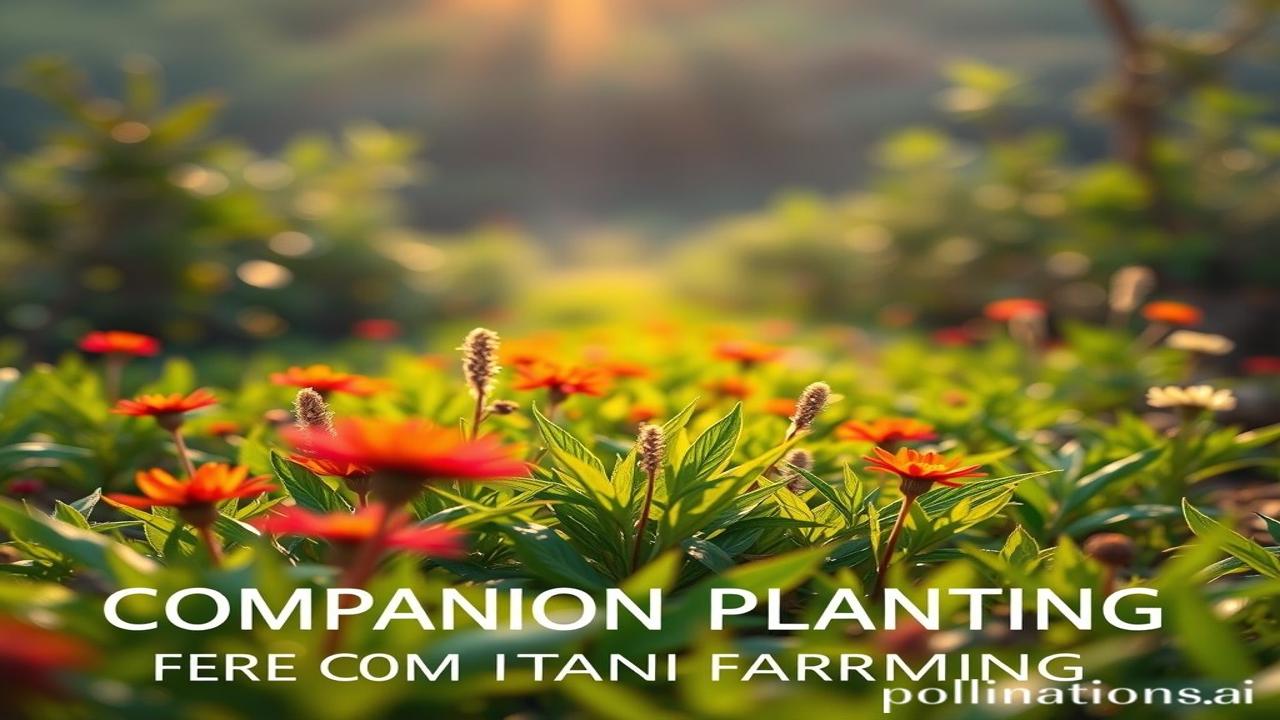Kabhi Socha Hai, Dharti Maa Bhi Dosti Karti Hai? The Ancient Wisdom of Companion Planting
Kabhi socha hai, jab suraj ki pehli kiran khet mein padti thi, tab kitni baatein dharti aur beej ke beech hoti hongi? Waqt ki dhool mein chhupi hai ek aisi kahani, jahan kheti sirf kaam nahi, ek gehra rishta tha – insaan, ped-paudhe aur prakriti ke beech. This is the story of companion planting, an age-old Indian tradition where plants are not just grown near each other, but are actively chosen to help each other.
Companion Planting: What, When, Where, and Why?
Companion planting, in simple words, is the practice of growing different crops in close proximity to reap the benefits of their individual strengths. Think of it as a team effort, where each plant plays a unique role. It’s not a newfangled organic trend; it’s an ancient wisdom deeply embedded in Indian farming practices for thousands of years.
While pinpointing a specific “date” is tough, archaeological evidence suggests sophisticated agricultural practices, including intercropping (a form of companion planting), dating back to the Indus Valley Civilization (around 3300-1700 BCE). Vedic texts also mention the importance of understanding plant relationships. This knowledge wasn’t just about maximizing yields; it was about respecting the delicate balance of nature.
Why is it important? Because it’s a sustainable, eco-friendly way to farm. It reduces the need for chemical fertilizers and pesticides, promotes biodiversity, and enhances soil health. Plus, it’s a testament to the ingenuity and deep understanding of our ancestors.
Zameeni Sach: Farmers, Fields, and Timeless Techniques
Imagine a farmer, let’s call him Ramu kaka, in a small village in Rajasthan. He doesn’t just blindly scatter seeds. He carefully plans his planting. He knows that planting marigolds near his tomato plants will keep away nematodes (tiny worms that attack roots). He knows that growing basil (tulsi) near cabbage helps deter cabbage moths. His father taught him, his father learned from his father. It’s a knowledge passed down through generations.
“Beta,” Ramu kaka would say to his grandson, “Dharti Maa ko suno. Woh tumhein bataayegi kaunsa paudha kiske saath khush rehta hai.” (Listen to Mother Earth. She will tell you which plant thrives with whom.)
Ramu kaka might also grow legumes like beans or lentils alongside his maize (makka). The legumes, through their root nodules, fix nitrogen in the soil, naturally fertilizing the maize. It’s a symbiotic relationship, a dance of give and take, all within the humble fields of rural India.
Ma Rukmini, Ramu kaka’s wife, would use the kitchen scraps and leftover rice water to nurture the plants. Nothing goes to waste. Everything is part of the cycle. Even the weeds that sprout are often carefully chosen for their medicinal properties.
Dharohar Aur Pehchan: Echoes in Today’s India
Even today, in many parts of India, you’ll find companion planting being practiced, often unknowingly. The familiar sight of mustard (sarson) intercropped with wheat (gehu) in Punjab, or turmeric (haldi) grown with ginger (adrak) in Kerala, are examples of this ancient wisdom at play.
The rise in popularity of organic farming and sustainable agriculture has brought renewed interest in companion planting. Farmers are rediscovering the benefits of these time-tested techniques, realizing that traditional knowledge holds the key to a more resilient and environmentally friendly future. It’s a reclaiming of our Bharatiya heritage.
Companion planting also connects to the larger concept of Vasudhaiva Kutumbakam – the world is one family. It reminds us that everything is interconnected, and by understanding and respecting these connections, we can create a more harmonious and sustainable world.
Mazedar Tathya ya Bhram-Bhanjak: The Truth About Neem
Log samajhte hain ki neem sirf ek ped hai. Lekin asli sach yeh hai ki neem ek poora pharmacy hai! (People think neem is just a tree. But the real truth is that neem is a whole pharmacy!) Neem, a cornerstone of Ayurvedic medicine, is also a powerful companion plant. It acts as a natural pesticide and insecticide, protecting nearby plants from pests and diseases. While many believe neem is a “bitter” tree offering no benefit, its leaves, seeds, and bark are treasures in traditional Indian farming.
Drishya aur Bhavnayein: Painting the Scene
Imagine the smell of damp earth after the monsoon rains, the buzzing of bees flitting from flower to flower, the gentle rustling of leaves in the breeze. Picture the vibrant colors of marigolds against the backdrop of lush green tomato plants. Feel the warmth of the sun on your skin as you walk through a field teeming with life, a testament to the wisdom of companion planting. The air is thick with the scent of basil and the earthy aroma of healthy soil.
Antim Vichar ya Uddharan: A Timeless Lesson
As the great Indian philosopher, Jiddu Krishnamurti said, “To understand the immeasurable, the mind must be extraordinarily quiet, still.” The quiet wisdom of companion planting reminds us to listen to the Earth, to learn from nature, and to cultivate not just crops, but also relationships – between plants, people, and the planet.
Vasudhaiva Kutumbakam – The world is one family. Let us cultivate that understanding in our fields and in our hearts.
